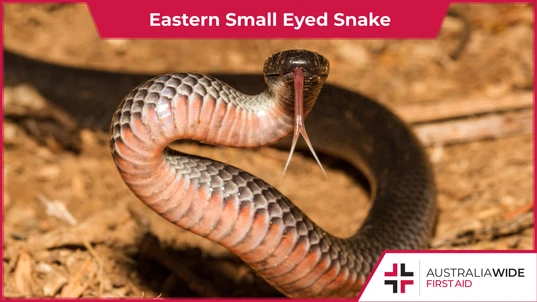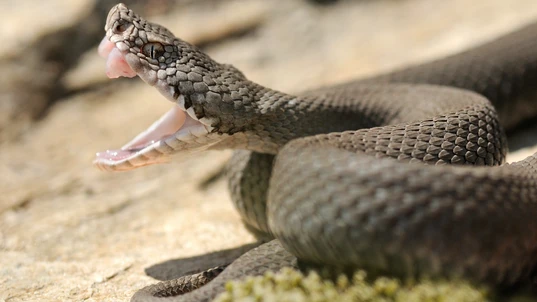The Eastern Small Eyed Snake

Bites and Stings

The Eastern Small Eyed Snake is widely distributed along the east coast of Australia. Continue reading for more information on their identifying characteristics, preferred habitat, and level of toxicity.
The Eastern small eyed snake is a secretive, night-dwelling species found in eastern Australia. With their black body colour and dark pink underside, they are commonly mistaken for Red-bellied black snakes. Like the Red-bellied black snake, these snakes are considered dangerously venomous and have caused death. As such, it is important to be wary of the Eastern small eyed snake - continue reading for more information about their identifying characteristics, preferred habitat, and level of toxicity.Appearance
The Eastern small eyed snake (Cryptophis Nigrescens) is a small to moderately-sized species. They generally average 0.5 metres in length but can grow up to 1.2 metres long. The scales on their head and body are smooth, glossy, and uniformly blue-black in colour. The scales on their underbelly, meanwhile, can range from cream to bright coral pink with dark blotches. Unlike the Red-bellied black snake, the colouration on their underbelly does not extend up onto their sides. And as their name suggests, the Eastern small eyed snake has beady black eyes that are almost indistinct from the surrounding scales.Habitat
The Eastern small eyed snake is widely distributed along the east coast of Australia from Cape York to Melbourne. They are common in habitats with a high moisture level, such as rainforest and wet sclerophyll forest, but can also be found in woodlands, heaths, and rock outcrops. In these habitats, they generally shelter beneath rocks, logs, and other refuse.Habits
The Eastern small eyed snake is mostly active at night, when they forage for a variety of ectothermic prey, including skinks, legless lizards, and other small snakes. In terms of predators, they occasionally fall foul to their own kind. Additionally, female Eastern small eyed snakes are ovoviviparous and give birth to live young.Danger
As they are most active at night, Eastern small eyed snakes are rarely encountered during the day. When disturbed, they are reluctant to bite but have been known to thrash about wildly. The toxicity of their venom seems to vary geographically, and effects on humans can range from no symptoms to renal failure and possible death. In fact, there has been one recorded fatality from an Eastern small eyed snake bite. Their venom contains long acting myotoxins, proteins that can attack and destroy muscle tissue, including the heart muscle, for days after envenomation. As such, if bitten by an Eastern small eyed snake, you should immediately apply snake bite first aid and seek medical attention.
It is important to remember that snakes will never go out of their way to attack you. As such, to avoid snake bites, you should never attempt to approach, capture, or kill snakes at home or in the wild.
How to avoid snake bites
The best way to avoid snake bites is to not touch or disturb any snakes you come across at home or in the wild. If you need a snake relocated from your home, you should contact a professional snake catcher. The following precautions can also help to avoid snake bites:- Wear boots and trousers when walking through scrub and other prime snake territory
- When in prime snake territory, check inside your shoes, clothes, and sleeping bag before using them
- Do not put your limbs in or under logs, rocks, and other refuse without first checking if a snake is present
Final thoughts
The Eastern small eyed snake is similar in appearance to the Red-bellied black snake and is widely distributed along the east coast of Australia. These active foragers hunt by night and are rarely encountered during the day. They are considered a venomous snake, as their venom contains myotoxins that can continue to attack muscle for days following envenomation. It is important to remember that snakes will never go out of their way to attack you. So if you encounter a snake at home or in the wild, never attempt to capture or kill them. For more information on preventing and treating snake bites, book a First Aid course with Australia Wide First Aid today.
Originally published at
https://www.australiawidefirstaid.com.au/resources/eastern-small-eyed-snake
as part of the Australia Wide First Aid Articles Library









